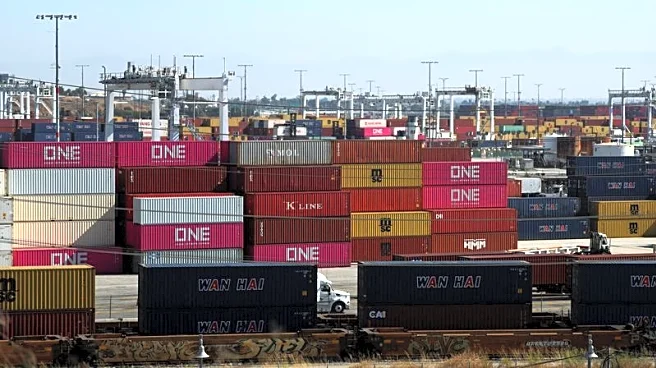What's Happening?
The U.S. trade deficit increased significantly in July, reaching $78.3 billion, according to the Department of Commerce. This expansion was driven by a 5.9% rise in imports, totaling $358.8 billion, while exports saw a modest increase of 0.3% to $280.5 billion. Analysts attribute the surge in imports to businesses stockpiling goods in anticipation of higher tariffs imposed by President Trump. The tariffs, initially set at 10%, were postponed twice before being raised in August, affecting major trading partners such as the European Union, Japan, and India. The trade deficit with China also widened by $5.3 billion, reaching $14.7 billion.
Why It's Important?
The widening trade deficit has significant implications for U.S. economic policy and international trade relations. The increase in imports suggests that businesses are attempting to mitigate the impact of tariffs by stockpiling goods, which could lead to higher business costs in the future. This situation may affect various sectors, including industrial supplies and consumer goods, as companies adjust to new tariff levels. The deficit with China highlights ongoing trade tensions, which could influence future negotiations and economic strategies. The broader economic impact includes potential shifts in trade policies and adjustments in business operations to manage increased costs.
What's Next?
As businesses deplete their stockpiled inventories, they will likely face higher costs for new imports due to the increased tariffs. This could lead to changes in pricing strategies and supply chain adjustments. The U.S. government may need to address the trade deficit through policy measures or negotiations with affected trading partners. Stakeholders, including businesses and policymakers, will be closely monitoring the economic impact and considering strategies to mitigate potential negative effects on the economy.













